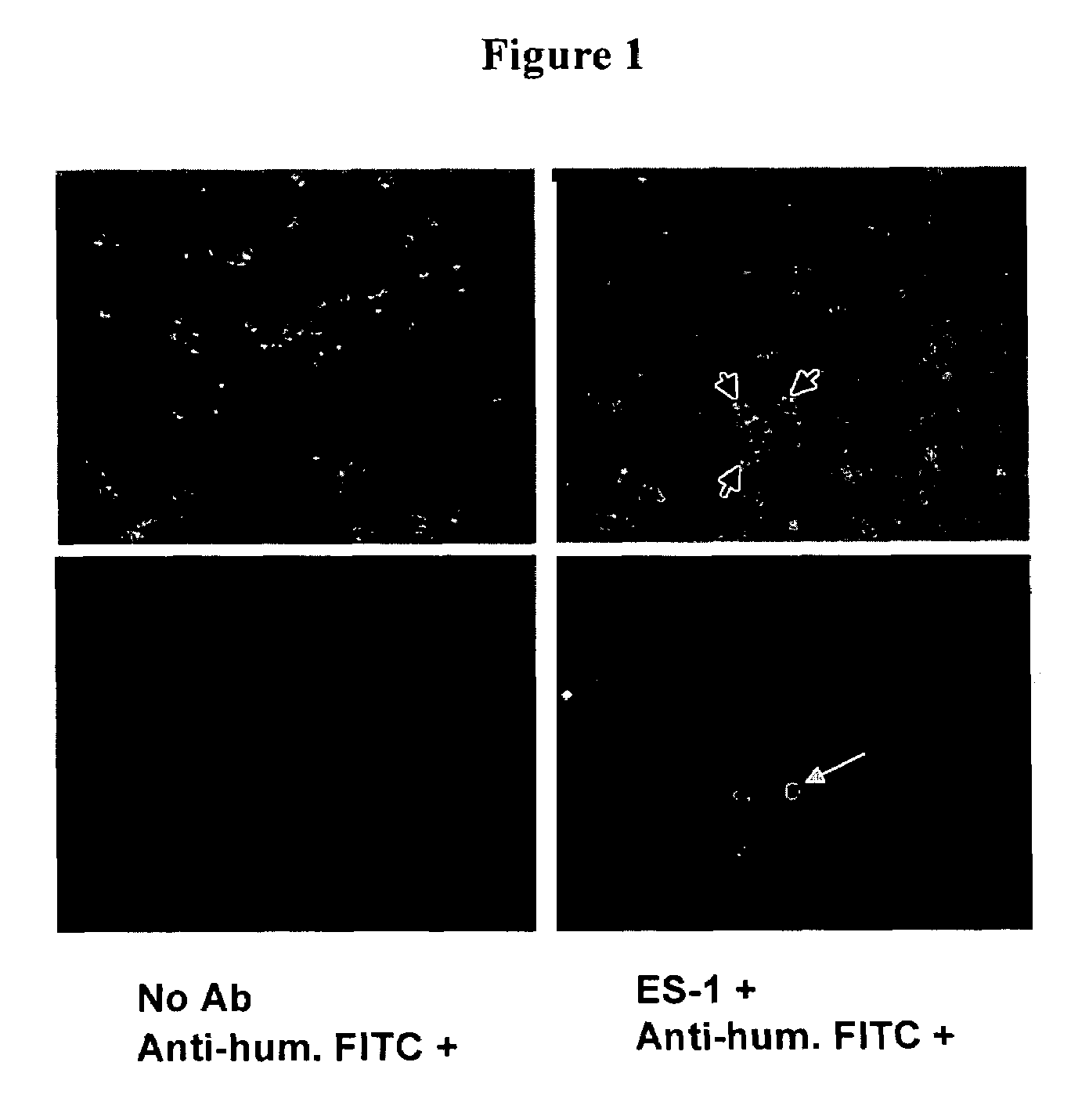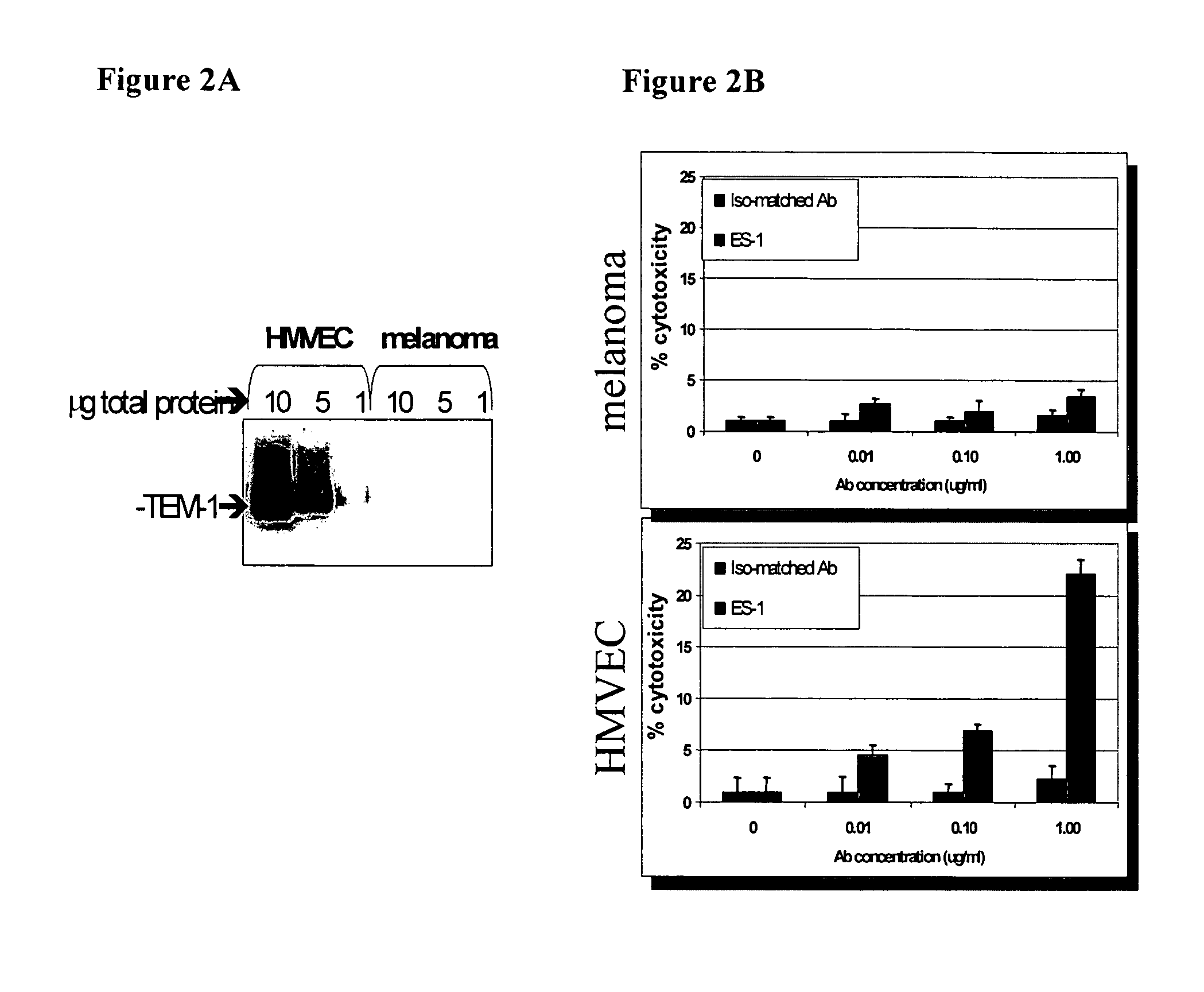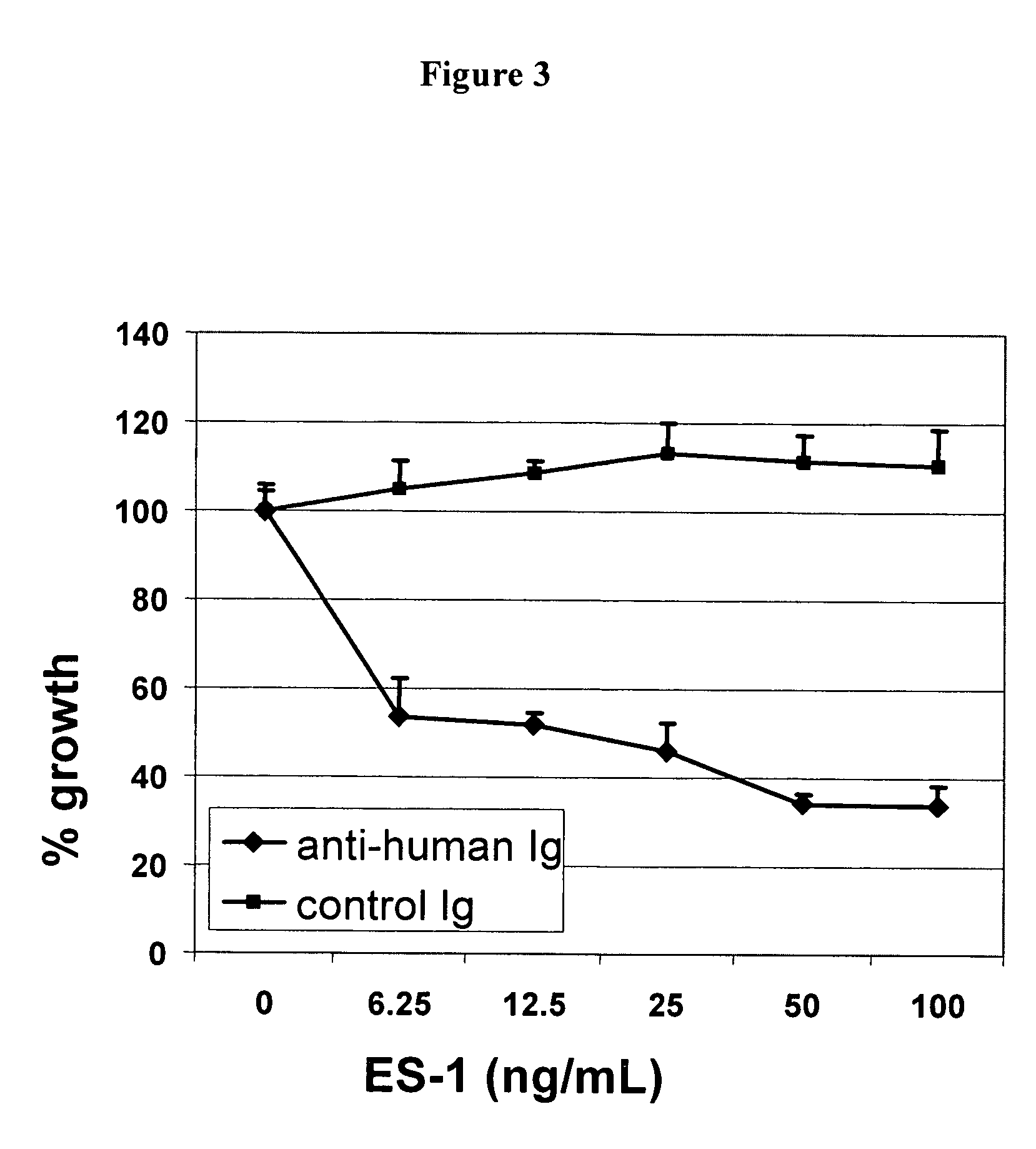Antibodies with immune effector activity and that internalize in endosialin-positive cells
an antibody and endosialin-positive cell technology, applied in the field of monoclonal antibodies, can solve the problems of inability to specifically target and kill or suppress the action of these cells via pharmaceutical compounds, and inability to get robust killing, so as to enhance antitumor activity, enhance antibody-dependent cellular cytotoxicity, and potent therapeutic activity for t-cell leukemia and lymphoma
- Summary
- Abstract
- Description
- Claims
- Application Information
AI Technical Summary
Benefits of technology
Problems solved by technology
Method used
Image
Examples
example 1
In-out Antibodies that can Bind to Endosialin
[0128]The monoclonal antibody ES-1 is a humanized antibody specific to endosialin. The antibody was shown to bind specifically to endosialin protein, cancer cells expressing endosialin, human embryonic endothelial cells, and leukocytes. To demonstrate endosialin-specific binding, whole cell ELISA were performed using endosialin-expressing cells in a96-well format following methods used by those skilled in the art. Antibodies found to react by ELISA were further analyzed for endosialin binding using FACS analysis following the manufacturer's protocol. In-out antibodies can be identified by screening using immunohistochemistry (IHC). Use of IHC to detect antibodies that can bind to endosialin expressed on the cell surface was shown by immunohistochemistry of endothelial cells (ECs) that express endosialin. The anti-endosialin or normal IgG antibody was applied to ECs concentrations (0.5 ug / mL and 2.5 ug / mL). Phosphate-buffered saline [PBS (...
example 2
Immune Effector Activity of ES-1
[0130]Immune effector activity was assessed by standard antibody-dependent cellular cytotoxicity (ADCC) assays on the endosialin-expressing Lu cell line. Briefly, Lu target cells are seeded in flat-bottom 96-well microplates in complete growth medium (RPMI-1640 containing 10% FBS, 2 mM L-glutamine). The following day, the complete medium is replaced with 100 ul of CHO-CD serum-free medium (Sigma) and 50 ul of antibody-containing conditioned medium is added to target cells and incubated for 20 minutes at 37° C. Subsequently, 100 ul of serum-free medium containing 2×105 effector cells are added to each well and cells are incubated for 5-6 hours at 37° C., 5% CO2. Effector cells are derived from human peripheral blood mononuclear cells (PBMCs), isolated from healthy donors (purchased from Interstate Blood Bank). Prior to use in ADCC, PBMCs are activated by seeding PBMCs at 2.5×106 / ml in complete RPMI containing 10 ng / ml human recombinant interleukin 2 (R...
example 3
ES-1 Antibody Internalization
[0132]ES-1 internalizes when bound to endosialin-expressing cells. This finding is shown in FIG. 3 using the Hum-ZAP assay. Second immunotoxins are conjugations of a secondary antibody to the ribosome inactivating protein saporin. If the primary antibody being tested is internalized, the saporin is transported into the cell via its binding to the secondary antibody. Once internalized saporin separates from its IgG conjugate, it inhibits protein synthesis and ultimately causes cell death. Hum-ZAP (Advanced Targeting Systems, cat# IT-22) is a secondary chemical conjugate of affinity purified goat anti-human IgG (mw 210 kDa) that recognizes human monoclonal antibodies. The control molecule, Goat IgG-SAP (Advanced Targeting Systems cat#IT-19) is a conjugate of normal goat IgG and saporin. Briefly, cells are plated into flat-bottom 96 well tissue culture plates at 2500 / well in 80 ul of RPMI 1640 with 10% FCS, 2.0 mM glutamine, 1.0 mM sodium pyruvate, and 0.1 ...
PUM
| Property | Measurement | Unit |
|---|---|---|
| concentrations | aaaaa | aaaaa |
| concentrations | aaaaa | aaaaa |
| pH | aaaaa | aaaaa |
Abstract
Description
Claims
Application Information
 Login to View More
Login to View More - R&D
- Intellectual Property
- Life Sciences
- Materials
- Tech Scout
- Unparalleled Data Quality
- Higher Quality Content
- 60% Fewer Hallucinations
Browse by: Latest US Patents, China's latest patents, Technical Efficacy Thesaurus, Application Domain, Technology Topic, Popular Technical Reports.
© 2025 PatSnap. All rights reserved.Legal|Privacy policy|Modern Slavery Act Transparency Statement|Sitemap|About US| Contact US: help@patsnap.com



